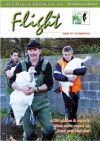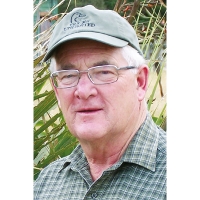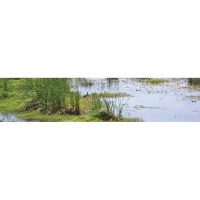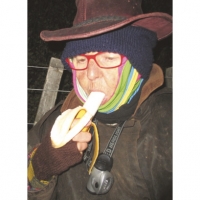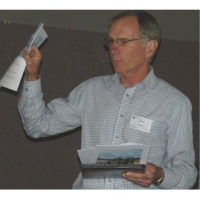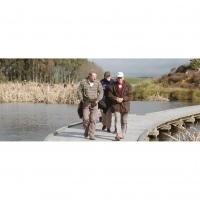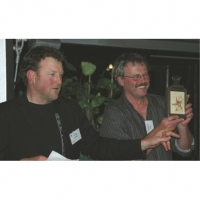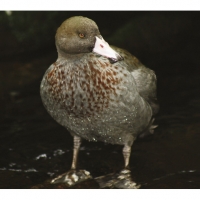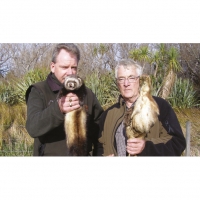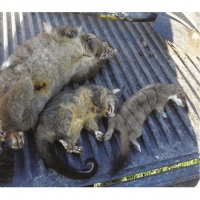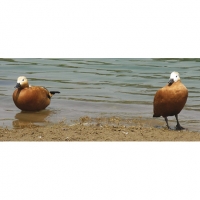I am privileged to be the new DUNZ President appointed by my fellow DU Directors at our meeting at the Napier Conference in August. I thank them for their confidence and hope I can make as big a contribution to wetland and waterfowl conservation as our past President Ross Cottle. To Ross, a big thank…
Published in
Issue 157
Tagged under
Ducks Unlimited Canada are celebrating 75 years of existence this month, October 20013. In a special souvenir issue put out by the Calgary Herald there is a piece that explains why Canada needs wetlands. In New Zealand we need wetlands to be looked after as well, so here are the reasons given by the Canadians.…
Published in
Issue 157
Tagged under
Proposed predator control is vital for Habitat Te Henga and for the reintroduction and survival of many birds including pateke. John Sumich , Chair, Habitat Te Henga puts the case. Matuku, Forest & Bird’s sanctuary, is approximately 120ha of regenerating mixed kauri and podocarps that merges into West Auckland’s Te Henga wetland, the largest in…
Published in
Issue 157
Tagged under
In New Zealand we have our special icon, the Kiwi. This is the only country in the world where Kiwi live. They make their burrows in the undergrowth and enjoy running about searching for worms and spiders. However, with such a lot of predators now, it is wise to have Kiwi either in a safely…
Published in
Issue 157
Tagged under
There is something majestic about Mute swans as they glide gracefully on the surface of a lake, no wonder they are in great demand. Swan Upping* has been an annual event for Ducks Unlimited for about 28 years with some members travelling quite a distance to take part in “catching up the swans”. Peacock Springs,…
Jim Law explained what is happening at Wairio Wetland in the southern Wairarapa when he presented the following at this year’s AGM. During 2012/2013 restoration work increased significantly and the research programmes by Victoria University’s Wellington School of Biodiversity and Restoration Ecology were expanded to include nutrient studies and hydrology. However, of greatest interest are…
An interesting visited during the AGM Conference was the long, narrow Ahuriri estuary. We travelled by bus, so there was no chance to dip a toe in the water. With its wide range of fresh to salty, shallow to deep, and sandy to muddy habitats the estuary supports a diverse range of birds, fish, invertebrates and…
It is satisfying to see the steady rise of Ducks Unlimited website usage over the last year. Contributing factors are the great work DU are doing in Wairio and country wide, the improvements we are making to the site, word of mouth and a substantial amount of traffic directed to us by Google searches, mostly…
Tony Roxburgh, chair and trustee of the National Wetland Trust provided the AGM with a glimpse of happenings with wetlands in Waikato. The Trust plans a state-of-the-art interpretation centre, with research and educational facilities, wetland gardens and heritage trails on land next to Lake Serpentine in the Waipa district. This is one of 69 peat…
Published in
Issue 157
Tagged under
Our intrepid group of AGM attendees visited the Pekapeka Swamp, squeezed in between the railway on the Eastern side, and State Highway 2 on the West. This area is well known to travellers who use SH2 south of Hastings. Older people who passed this way remember the swamp as being totally overgrown by grey willow.…
Published in
Issue 157
Tagged under
New auctioneer gets the dollars Two successful auctions, one silent, the other noisy and very lively, kept members alert with lots of laughter to boot. Auctioneer Dan Steele successfully filled the big shoes left by Bob Wood who sadly died in February this year. Dan’s banter was every bit as funny as Bob’s had been,…
Peter Russell keeps a watchful eye on Whio to make sure the numbers are kept up and they return as much as possible, to the areas where they started life. Breeding Results The past year has been the best to date with 26 ducklings reared and released back into the wild. This was achieved by…
Motu Scenic Reserve is a 20 hectare kahikatea wetland forest located just past Motu township in the Eastern Bay of Plenty. The reserve is unique as it contains: an oxbow wetland (crescent-shaped lake lying alongside a winding river) and an original kahikatea swamp forest, one of only two percent left in New Zealand. The remainder…
Published in
Issue 157
Tagged under
“We had a great day – about 1600 plants in the ground!” was the enthusiastic report from Jim Law after a successful planting day at Wairio Wetland in southern Wairarapa. Mainly flaxes and sedges (about 1200) were planted around the southern and south eastern sides of the new dam wall at Stage 4 and 400…
Published in
Issue 157
Tagged under
To help protect the birds, a trapping programme is underway to get rid of ferrets and other pests to provide a safer environment for rare native birds in the Wairarapa Moana wetlands. These include Australasian bittern, royal spoonbill and the dabchick. Greater Wellington Regional Council (GWRC) started trapping around Matthews lagoon and Boggy Pond in…
Published in
Issue 157
Tagged under
Trapping is the name of the game. DU member of Pohangina wetlands Gordon Pilone, sent in these shots of a recent catch. He uses DOC 250 traps to eliminate stoats, rats and hedge hogs. The kill traps are elevated on a plank on blocks to delay weed invasion and stoats seem to like “running the plank”. Gordon…
Published in
Issue 157
Tagged under
Animal pests and predators are a major threat to the survival of New Zealand’s special native flora and fauna. A wide range of techniques and tools are used to control pests, depending on the threats and the terrain. Ground control is Department of Conservation’s main approach. They use traps, bait stations or culling. It can…
Published in
Issue 157
Tagged under
Blue Duck Station, where DU director Dan Steele and his family live, work, conserve and save ducks, have discovered traps that seem to be super efficient. Here is something about them. We are pretty excited about the latest technology for dealing with pests; Good Nature’s A24. The A24 is quite different from the DOC200 (350…
Published in
Issue 157
Tagged under
The improvement of Southland’s Waituna Lagoon and catchment health and wellbeing has become the focus for a number of organisation with statutory roles for this unique site. The Waituna Lagoon is part of the 20,000ha Awarua Wetland, a designated Ramsar Wetland of International Importance and one of the best remaining examples of a natural coastal…
Published in
Issue 157
Tagged under
Attitude change I have been a member of DUNZ since the early 1980s, and a past Director. I owned my first wetlands in 1962 when I was 18 (100 acres in the Waimarino Wetlands, now known as the Deans Block), and I have been actively involved in wetland ownership and preservation ever since. I am…
Published in
Issue 157
Tagged under
Lots of interesting birds in Myanmar (aka Burma) I was told. I looked forward to seeing a few. A very few was what I got. Domestic ducks were almost everywhere, the variety of colors was amazing. Out on Lake Inlay I saw an Egret perched high on a pole, and flocks of gulls also on…
Published in
Issue 157
Tagged under
Duck brood study A $300,000 Fish & Game study is hoped to shed light on nesting success of native birds, in particular duck broods. The three year study is the first of its kind in New Zealand, and aims to pinpoint when birds nest and lay, how many ducklings hatch and how many survive and…

